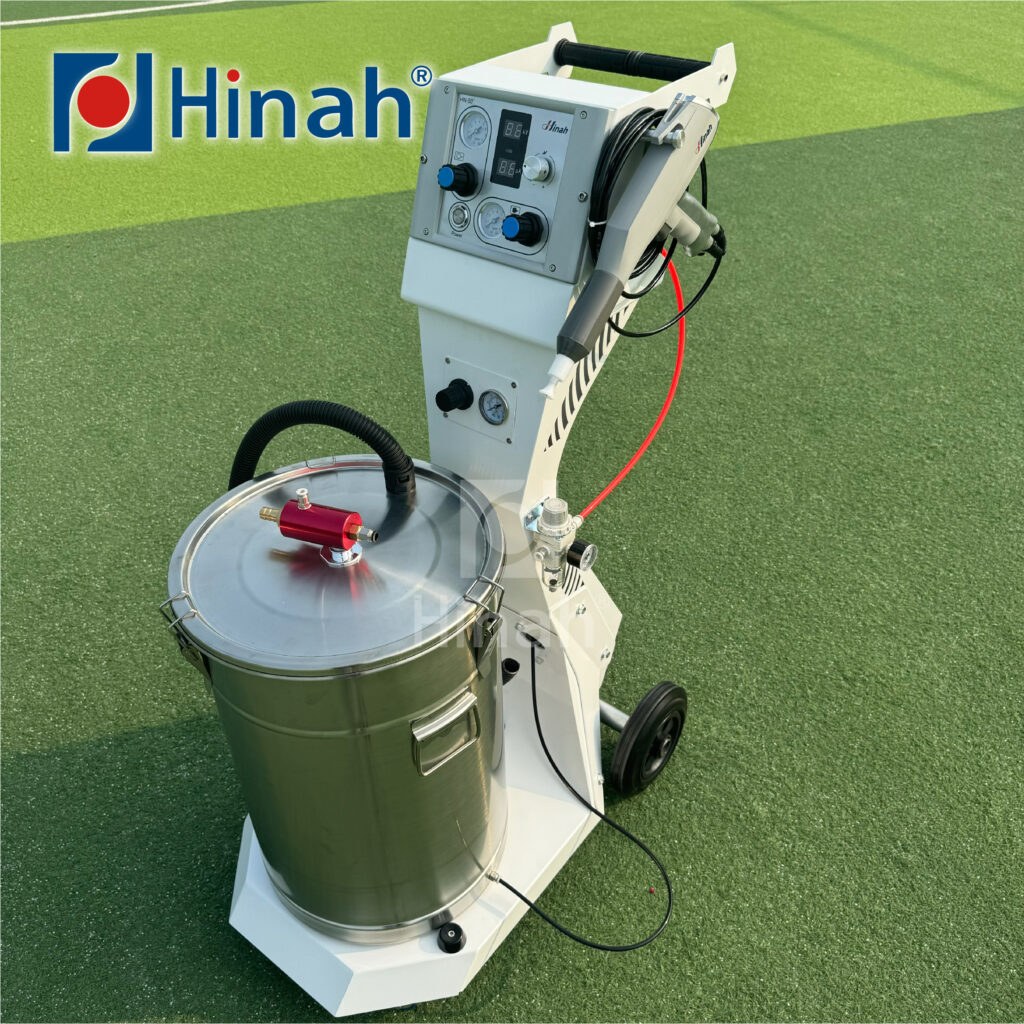Common Powder Feeding Problems in a Powder Coating Machine
When a powder coating machine runs smoothly, the results speak for themselves—clean, even finishes, minimal waste, and a production line that feels effortless. But when the powder feeding system starts acting up, things can quickly turn frustrating. Uneven spray, clogged hoses, or inconsistent flow don’t just slow down production; they waste materials and compromise coating quality.
Every operator knows that the heart of a good finish lies in steady and reliable powder delivery. Yet, small issues in feeding often go unnoticed until they create bigger problems. In this article, we’ll take a closer look at the most common powder feeding problems that occur in a powder coating machine, why they happen, and what can be done to keep the line running at its best.
Understanding Powder Feeding in a Powder Coating Machine
At the core of every powder coating machine is the powder feeding system, the part responsible for moving powder from the hopper to the spray gun with a steady, controlled flow. Think of it as the “circulatory system” of the machine—if the flow isn’t smooth, the whole coating process suffers.
A typical setup includes several key components: the hopper, where the powder is stored and fluidized; the injector or powder pump, which draws the powder into the airflow; the hoses, which carry the mixture forward; and finally, the spray gun, which applies the powder to the part. Each piece has to work in harmony to deliver a consistent, fine spray that ensures even coverage on the surface.
When powder feeding works correctly, operators hardly notice it—it just feels seamless. But any disruption, whether from moisture, clogged hoses, or poor airflow, shows up immediately in the finish. That’s why understanding how feeding works in a powder coating machine isn’t just technical knowledge; it’s the foundation for achieving reliable, high-quality coatings day after day.
Common Powder Feeding Problems in Powder Coating Machine
- Blockages in Powder Hoses
Few things slow down production faster than a clogged hose. When powder compacts inside the line—often because of moisture in the air or poor cleaning routines—it disrupts the airflow and starves the spray gun. Operators might notice sputtering or uneven spray patterns, which can ruin the coating finish. Regularly purging the hoses and keeping the environment dry are simple but powerful ways to keep blockages at bay.
- Inconsistent Powder Flow in Powder Coating Machine
One of the most frustrating problems is when the powder flow seems to have a mind of its own. One minute it’s steady, the next it’s barely coming through. This usually points to issues with air supply, worn injectors, or a partially clogged pump. The result is a finish that looks patchy and unreliable. Keeping an eye on air pressure and maintaining injector parts can make a world of difference in keeping the powder coating machine stable.
- Poor Fluidization in the Hopper
The hopper is where the powder “comes alive.” With proper airflow, the powder behaves almost like a liquid, flowing smoothly to the injector. But if the fluidizing plate is damaged or airflow isn’t calibrated, the powder clumps and struggles to move. This leads to uneven spray and wasted material. A well-maintained hopper not only improves coating quality but also makes the operator’s job much easier.
- Powder Segregation or Clumping
Recycled powder often brings its own set of challenges. Over time, fine and coarse particles separate, or humidity causes the powder to clump together. Either issue creates feeding inconsistencies that show up as thin spots or rough textures on the coated surface. Good storage practices—keeping powder dry and sealed—go a long way toward preventing this problem.
Troubleshooting and Solutions
When powder feeding problems show up, they rarely fix themselves. But the good news is that most issues in a powder coating machine can be solved with some practical steps and a bit of preventive care.
Routine Cleaning and Maintenance
Clogged hoses, dusty injectors, and blocked pumps are often the root cause of feeding troubles. A simple habit of cleaning the hoses and checking injectors at the end of each shift can prevent buildup before it becomes a problem. Think of it as keeping the “arteries” of the system clear.
Adjusting Airflow and Pressure Settings
Air supply is the lifeline of powder movement. Too much air and the powder sprays too aggressively; too little and the flow becomes inconsistent. Monitoring gauges and adjusting settings based on part geometry can restore smooth feeding and better coating coverage.
Proper Powder Storage and Handling
Powder that’s been exposed to humidity quickly becomes clumpy and difficult to feed. Storing powder in sealed containers, away from damp areas, keeps it in optimal condition. For recycled powder, sieving before reuse helps reduce segregation and ensures more consistent performance.
Using High-Quality Parts and Accessories
Cheap or worn-out parts in a powder coating machine might save money upfront but often cause recurring headaches. Reliable injectors, durable hoses, and properly designed hoppers are investments that pay off in smoother operation and less downtime.
By combining these small but effective measures, operators can turn frustrating feeding problems into rare occurrences. Troubleshooting isn’t about complex fixes—it’s about creating the right conditions for the powder coating machine to do what it does best: deliver a flawless, even coating every time.



